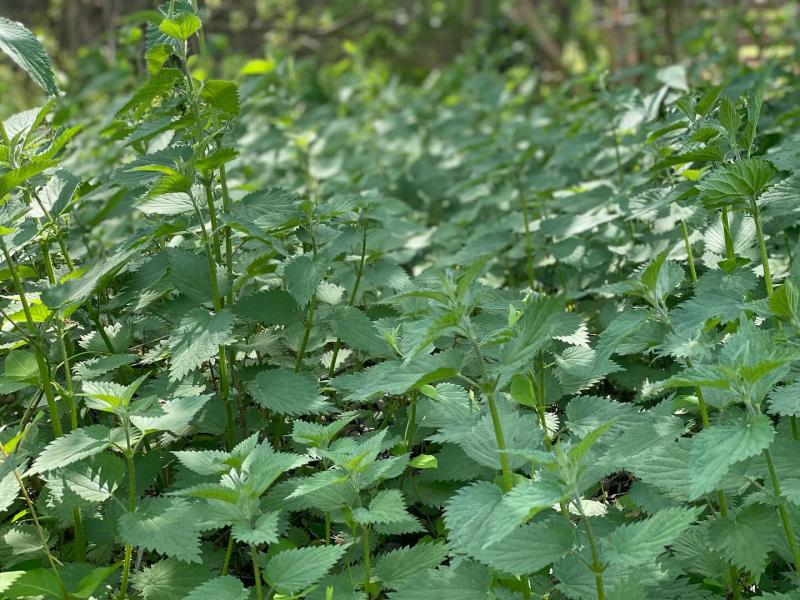Stinging nettles are tasty and nutritious if properly prepared
Last Saturday was opening day for the Historic Lewes Farmers Market at George H.P. Smith Park. The weather cooperated completely with bright sunshine and a light breeze. It was a treat to see familiar local growers alongside some new faces, including Caribe Locavore Farm, where I was introduced to a leafy green I would not have otherwise tried to eat. The sign next to a collection of small brown paper bags read “stinging nettles,” sold in such a way as to protect you from their sting.
Botanically named Urtica dioica, it’s sometimes called common nettle, burn nettle or stinger. Just as the name of the plant would warn, the undersides of its serrated leaves, along with the stems, are coated with tiny, white pointed hairs that can inject highly irritating compounds into your skin, causing a painful, burning rash. How in the world did something so aggressive become known as one of the world’s healthiest plants?
According to food historians, use of nettles has been traced back to the Bronze Age, as long ago as 3,000 BCE. Reports from the time of Julius Caesar noted his troops favored the nettles’ sting as helpful in keeping the men awake and alert. Nutritionally, they contain protein, fiber, vitamins and minerals, and they have a flavor similar to spinach when served as the base of soup or pesto and when brewed into tea.
This very common plant grows prolifically in damp soil on forest floors and riverbanks, making it a favorite of foragers. Native to Northern Africa, North America, Asia and Europe, the flowering plant is now found throughout the world, growing abundantly in regions with high annual rainfall.
It has been used medicinally, ceremonially and as a nutritious food source for thousands of years. The sting, which stimulates blood circulation, has been found helpful in treating inflammatory issues. Our ancestors relied on it to relieve aches and pains associated with rheumatism and arthritis. Many herbalists tout the benefits of stinging nettle for kidney issues, although this has not been endorsed by the Food and Drug Administration.
Once the stingers on the plant have been disabled, the roots, seeds and tender leaves are all edible. In addition, the mature fibrous stems have been used to make rope and fishing nets, and been woven into a sturdy cloth similar to flax or hemp. Scottish households in the 16th century made linens from nettle, and 20th century Germans mixed nettle and cotton fibers to make fabrics.
Before using stinging nettle as food, you must remove the sting. Be sure to wear gloves when handling the sprigs – either rubbery yellow dishwashing gloves or rubber-palm garden gloves. Remove the first few rows of leaves from the top of the sprig and place them in a colander, discarding the stems (unless you plan on doing a weaving project). Rinse them to remove any dirt, then transfer to a bowl.
Pour in enough boiling water to cover the leaves and allow them to sit for about a minute, making sure they are submerged completely. Dump them back in the colander and rinse with cold water to stop the cooking process. Drain them thoroughly, squeezing to remove any excess liquid (now they’re safe to touch). At this point, you can use them as part of a bright-green soup, a ravioli filling or an alternative to basil in pesto. Thank you, Caribe Locavore Farm, for bringing us such an interesting plant!
Blanched Nettles
Trim off upper nettle leaves from the stem and place them in a bowl, discarding the stems. Cover with boiling water. Allow to sit for 1 minute. Transfer to colander and rinse with cold water. Drain thoroughly and squeeze to remove excess water. Use as you would steamed spinach for soup, pesto or quiche.
Nettle Pesto*
























































